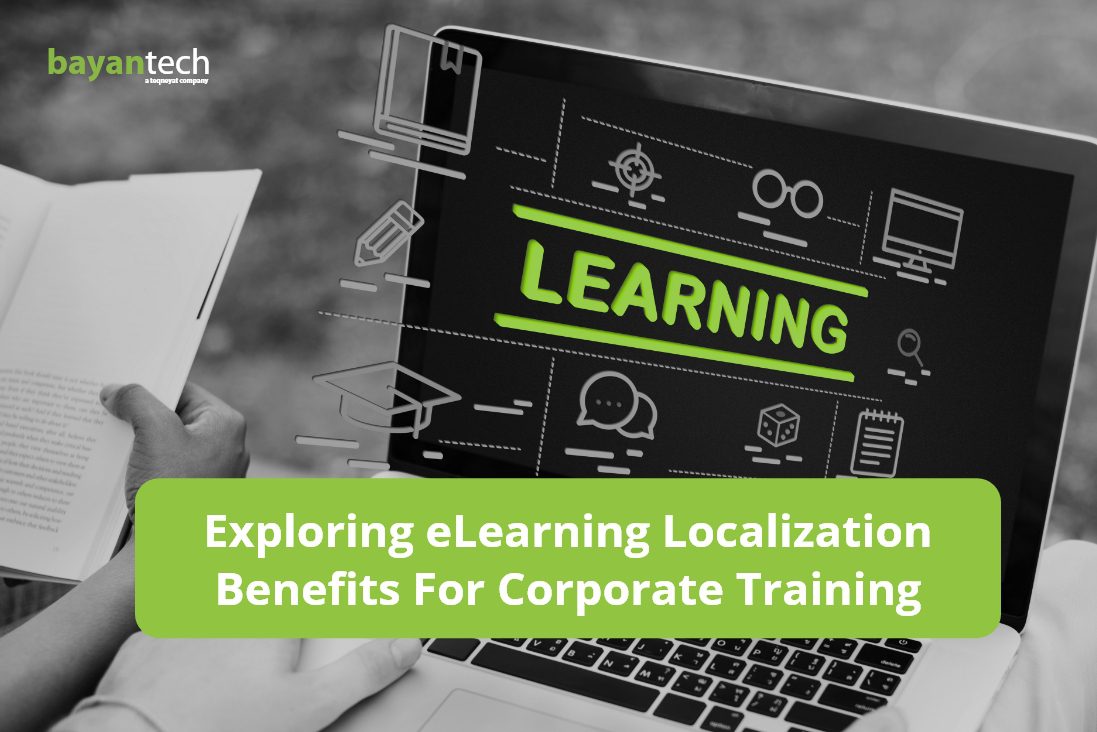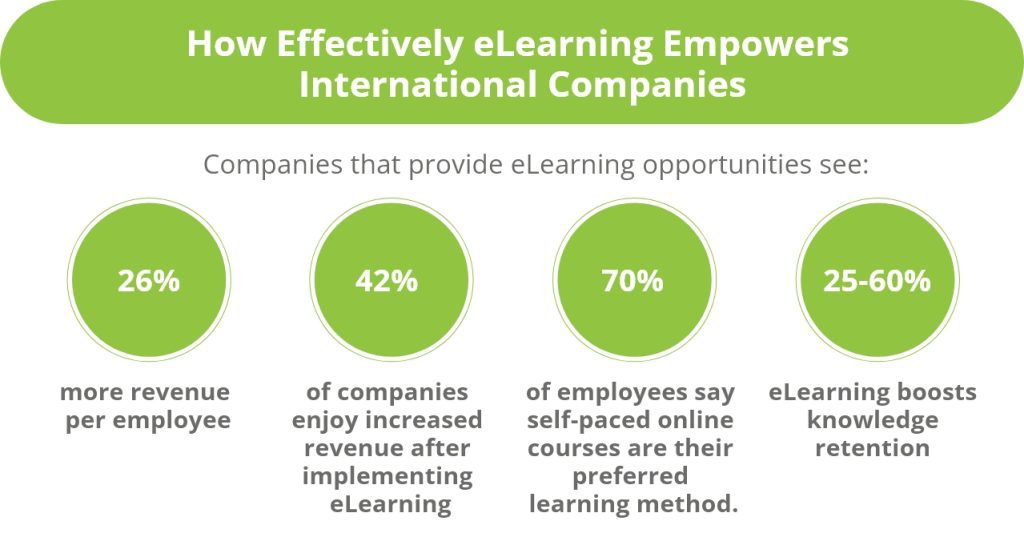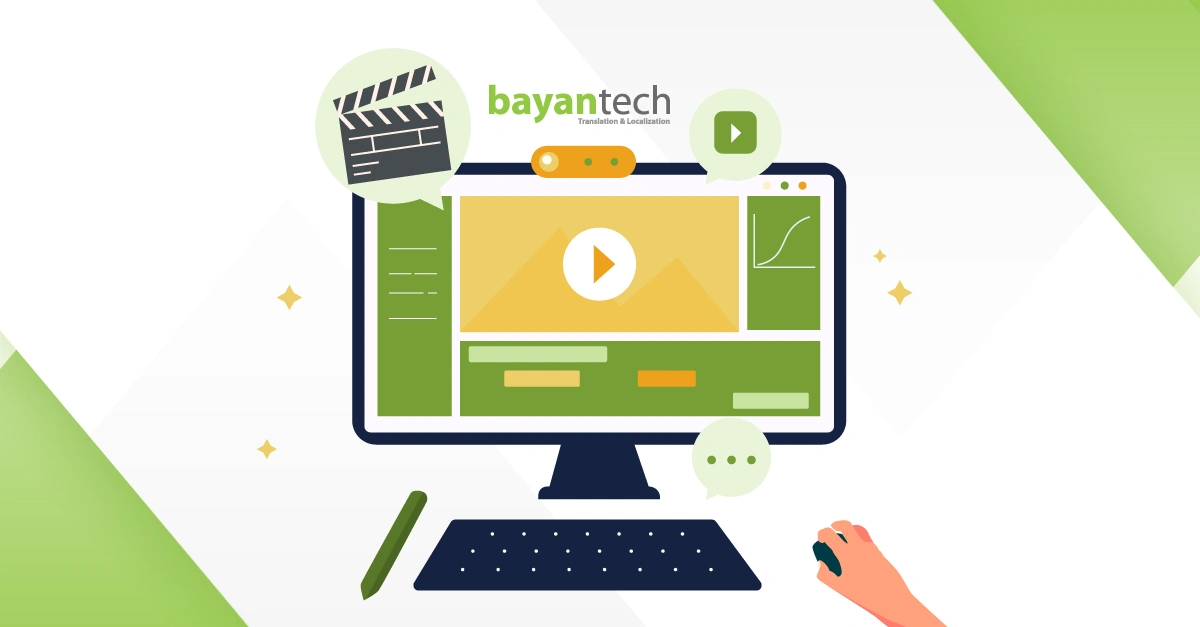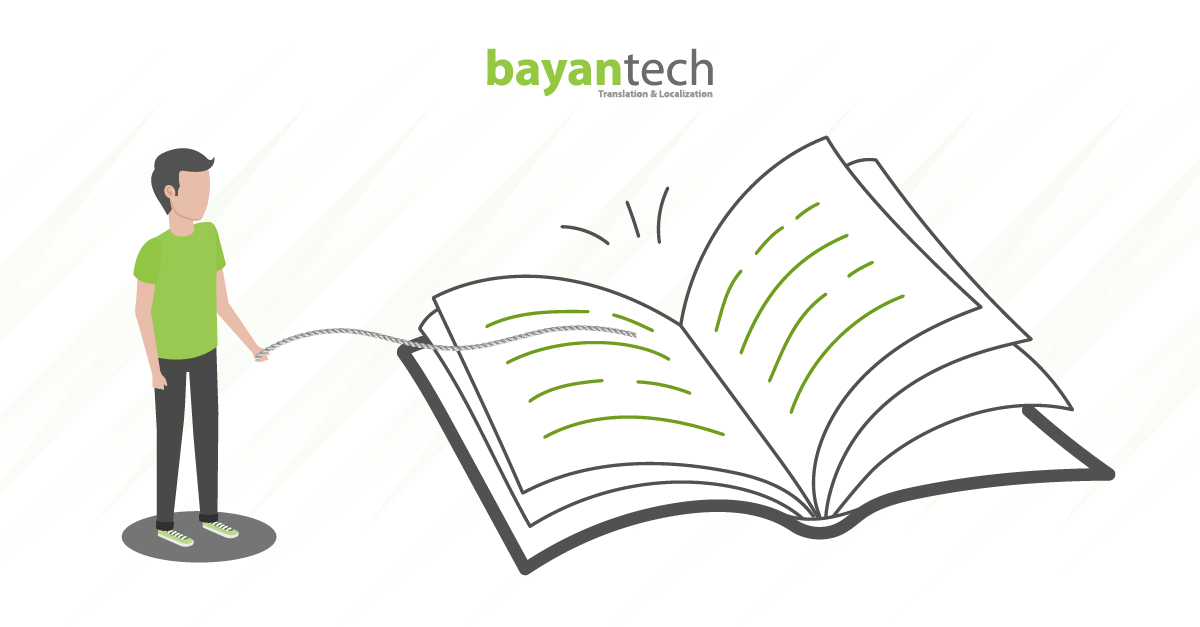Have you invested your time and money in providing online training courses for your employees, only to find the results aren’t meeting expectations? The missing piece might be in eLearning localization.
As your company grows internationally and workforces diversify, it becomes really important to engage your off-shore teams and avoid leaving many behind when it comes to corporate training.
With localization, it’s easier now to deliver training in multiple languages at scale and guarantee that all teams, domestically and abroad, can skill up and develop through localized eLearning programs in their own tongue.
And the best part is, eLearning localization also comes with many benefits that strengthen your company’s positioning internationally. And by learning how to maximize eLearning’s potential through localization, you can build an engaged, high-performing global team.
In this post, we’ll explore why eLearning localization must be central to your training strategy and provide you with 5 effective tips to help you along the way. Let’s get started!
Table of contents
What Is eLearning Localization? And What Does It Involve?
eLearning localization refers to adapting digital educational content in another language to make it linguistically accurate and culturally appropriate as if it was originally created for a specific audience.
So, is localization different from translation? YES.
While localization pays attention to linguistic and cultural aspects, eLearning translation focuses on the language and textual content with little consideration for the learner’s culture. However, both approaches are still very critical when adapting online corporate training materials.
The choice between these approaches depends on the nature and objectives of the content at hand. When it comes to training materials that delve into culturally-bound topics, a translation-only approach falls short.
For instance, a course on business negotiation strategies or office etiquette requires more than mere translation; it demands thorough cultural adaptation to resonate with learners from diverse cultural backgrounds
Also, localization becomes a better choice when the main goal is
- To provide engaging, inclusive, and interactive materials
- Make learning more effective and relatable.
But relying on translation alone might be enough when
- The intended outcomes are just to improve comprehension of factual information that is universally applicable within the company.
To gain a better understanding, let’s take a closer look at what the eLearning localization process looks like in detail.
Localizing Content & Cultural Differences
- Adapting date, time, currency, symbols, and number formats to match local norms.
- Converting units of measurement to the local system (imperial, metric, etc.).
- Modifying content that may be inappropriate in different cultural contexts.
- Localizing examples, case studies, names, and cultural references for local relevance.
- Ensuring that idioms, abbreviations, and colloquialisms accurately convey the same meaning in the target language.
Adapting Multimedia & Audio
- Adapting audiovisual elements such as images, illustrations, sound effects, music, and video on-screen texts for cultural resonance.
- Translating voice-overs, subtitles, and closed captions in the target language.
Localizing the UI & UX
- Redesign the UI (user interface) to support the reading direction (left-to-right or right-to-left) and the layout requirements of the target language.
- Selecting fonts, text size, typography styles, and spacing that fit the linguistic nature of the target language to improve readability.
- Verifying the technical functionality of the course and ensuring its compatibility with local hardware, software, and internet capabilities.
- Tailoring the learning experience and content presentation to align with the preferred learning styles of the target audience.
Curious to Know How to Build Impactful Multilingual eLearning Courses and Online Training?
Learn everything about eLearning & discover the keys to engaging learners worldwide in our comprehensive guide on eLearning localization.
Why Invest in eLearning Content Localization?
eLearning has become a new normal in recent years — for academic learners and corporations alike. Most importantly, it has enabled companies to train their new hires and upskill their employees more efficiently and affordably.
- Businesses can cut down the costs of physical material, accommodation, or venue costs that come with in-person training programs. (Companies that use eLearning cut operational costs by 50% to 70%).
- Content is updated easily to reflect the latest industry standards, technologies, or company policies.
- Once developed, courses can reach any number of employees without significant scaling costs.
- Leaders can track individuals’ progress and performance to identify areas of improvement.
- Companies can save time and boost productivity. (eLearning training takes 40% to 60% less time than traditional training).
Now, if you’re a company that operates in different parts of the world and wants to maximize your competitiveness, your international workforce must operate from the same playbook. As such, localizing the training experience is crucial for maintaining effective, unified training across all international offices.
However, eLearning content localization offers more than just a cohesive company culture. Let’s dive deeper into the numerous benefits of eLearning localization.
How Inclusivity Drives Higher Engagement & Increases Profitability
Do you know that localizing your training materials is directly linked to increased employee engagement and business profitability?
Building an inclusive learning environment through localized training increases employee satisfaction and loyalty because it demonstrates how you value them as individuals and are committed to their growth, reinforcing their integral role in the success of your organization.
Furthermore, research revealed that when companies invest in employee development, retention rates increase by 58% – helping them reduce high turnover costs. (It’s a win-win!)
Additionally, when employees acquire knowledge in the language that feels most natural and familiar to them, they will be fully engaged and immersed in the process. This encourages them to apply what they’ve learned confidently and contribute to a positive work environment which boosts performance.
How Language Accessibility Contributes to Employee Safety & Productivity
Do you know what is more serious than poor engagement and lack of inclusivity? It’s risking your employees’ safety and health.
It’s estimated that almost 25% of workplace accidents are due to language barriers, according to the Occupational Safety and Health Administration (OSHA). For this reason, translating and localizing your training modules becomes a necessity to maintain a safe workplace.
In addition to maximizing employee safety, eLearning localization also significantly improves productivity and operational efficiency by overcoming communication barriers. International executives reported that miscommunication caused by language barriers reduces efficiency by 67%, lowers productivity by 42%, and compromises work safety by 21%.
Learning in one’s native tongue makes retaining information easier and faster because you don’t have to mentally translate the content into your first language. This reduces mental effort, helps to focus more on the core training content, and maximizes the training outcomes. It makes sense, right?
5 Tips for Effective eLearning Localization
Here are five best practices you should know to optimize the eLearning localization process.
1. Standardize Source Content
If you’re planning to localize in more than one language in the future, you should make your content localization-friendly. Even if the content is already developed, you can still work on standardizing the material first to streamline the process later on.
- Use neutral language and avoid region-specific examples and complex sentence structures.
- Simplify visual elements and go for minimal designs to minimize adaptation complexities.
- Make sure that all source files (images, videos, audio) are editable so translators won’t have to create everything from scratch.
- Keep text separate from graphical elements for easier content extraction.
By doing so, you have a smooth, cost-effective localization process, instead of exerting extra time and effort into tailoring every element.
2. Create a Terminology Database
Again, if you’re continuously tailoring your content for multilingual employees in different regions, you need to establish a term database that combines all industry-specific jargon, technical terms, and specialized abbreviations.
This serves as a reference guide for translators and linguists to unify repetitive terms, and maintain accuracy and consistency – which is crucial for delivering easy-to-follow, easy-to-understand learning content.
3. Localize Everything
Beyond the main learning content, it’s equally important to localize all supplementary materials, such as:
- User instructions, help guides, or other documentation explaining how to use the eLearning course or platform.
- FAQs sections that support the learning content. (Consider adding region-specific FAQs.)
- Website content, if you have a website hosting the eLearning course.
4. Test Before Publishing
Before distributing the localized version, quality check it first to catch any technical errors or cultural insensitivities in translated content.
Check for bugs, linguistic mistakes, or technical inaccuracies. Make sure that the final product functions well on different devices and software, and that it’s accessible for users abroad.
5. Partner Up with Native Professionals
eLearning localization is a very complex process that involves many linguistic, technical, functional, and visual aspects requiring a centralized workflow.
By collaborating with a professional eLearning translation services provider, you have access to experienced translators, subject matter experts, designers, and localization engineers who are collectively working together using advanced localization tools and technologies.
Craft an Immersive International eLearning Experience with bayantech: Your Trusted Localization Partner
As an ISO-certified translation agency with over two decades of experience in the industry, bayantech offers end-to-end eLearning localization solutions in +120 languages.
Our cross-functional team of native linguists, available 24/7, is poised to handle all your localization needs. From cultural adaptation and subtitling to voice-over translation – we handle everything.
At bayantech, we follow a rigorous quality assurance procedure consisting of TEP (translation, editing, proofreading), along with multilayered technical testing processes. We’re simply committed to offering our clients the highest quality possible with competitive, customized pricing.
Are you ready to kickstart a journey of linguistic excellence? Request a FREE quote today.
Or contact us now and let our experts answer all your questions.
8 Steps Every Medical Interpreter Takes
Looking for a medical interpreter? Discover the career path of medical interpreters and qualifications they need to acquire to take on interpreting jobs.











